COLORS OF A PATRIOT
A journey of loving our homes
9/11/2024
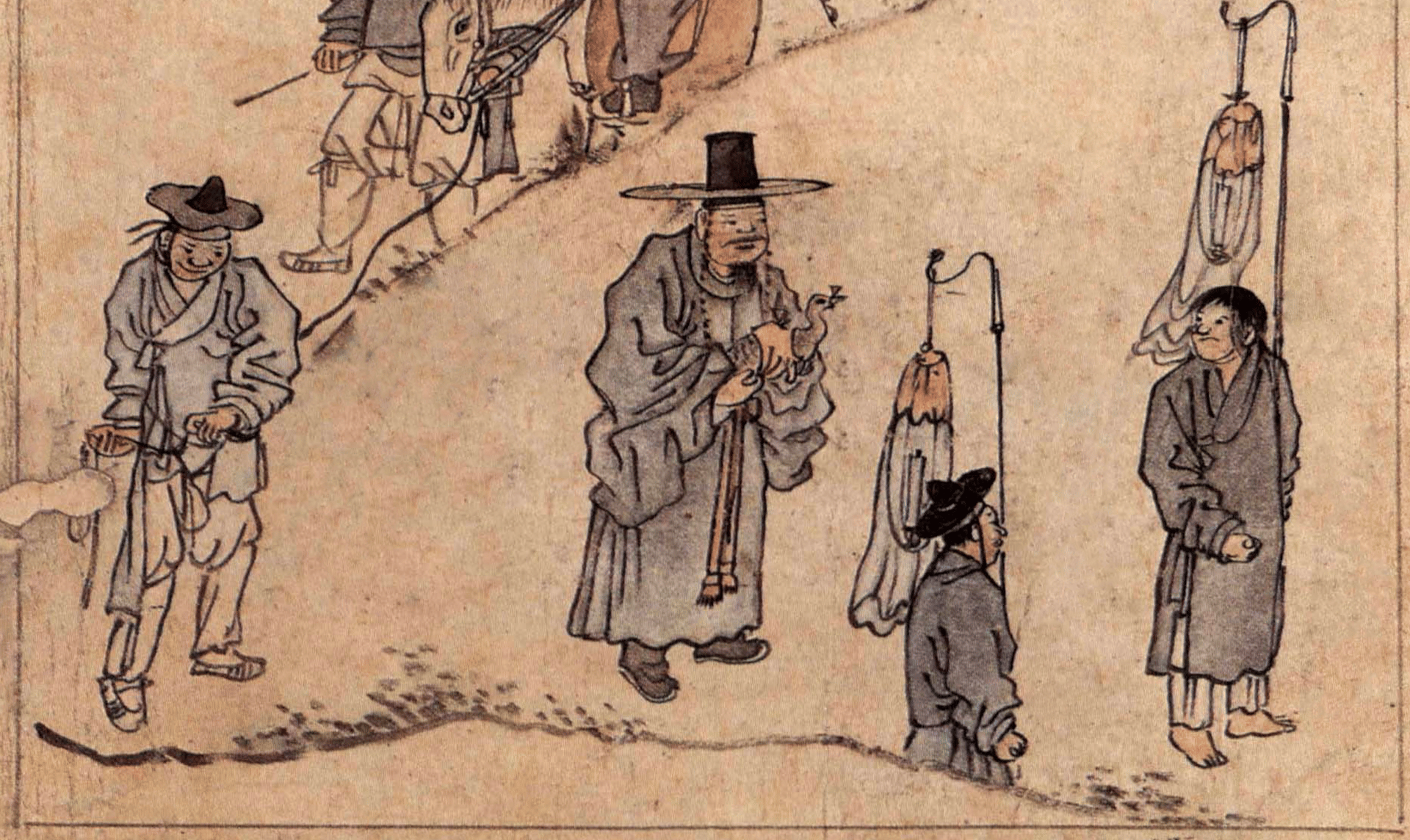
"Bojagi is a functional, esthetical, magical tool. It’s a piece of fabric that was used as a bag, gift wrapper, baby carrier, food covering, wedding duck wrapper, picnic mat and you name it! To Koreans, it was more than just fabric. It was a daily must-have."
Hongdo Kim <Wedding Procession>
It’s ironic how you somehow need to gain distance from your motherland to become a patriot. I sometimes wonder if I would have ever appreciated Korean traditional arts if I weren’t away from my mother country. I wonder the same about my feelings toward many Korean things. Food we share, music we sing, relationships we build, nature we admire, places we experience, clothes we put on, holidays we celebrate… When I emerged from my life in the US, I learned to better understand, love, and criticize my homeland.
During the artist residency, we were asked to make a self-portrait. As with most art projects, I spent a long time reflecting before making. As a Korean and US immigrant, who am I and what do I look like? In the midst of answering, the pictured self-portrait was made. Migration and transnationalism mark my life and identity, and so my bird finds its body becoming an avian migrant and yet combines the colors and shapes of Cardinal and Magpie, two species usually not considered among the far-flung migratory species. The media, method, and form of the work also creates a hybrid. The fine material and method of thread work draws from Korean markets and 보자기 and the form takes after Western traditions of stained glass. In this portrait of myself, I continue seeking a nest or two, even as I discover my own flight. I hope to make more works with traditionally used fabrics in Korea, including silk, ramie, hemp, etc. Also, I want more works to talk about identities, home, and place.
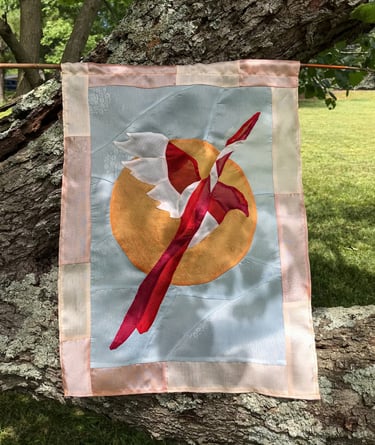

Back in October 2021, I had an opportunity to put on a gallery show in Jackson. I wanted to make a work responding to my mom’s comments on my identity. You can find that artwork here. I wanted to use materials that represent Korea, and I chose bojagi (보자기, Korean traditional patchwork) as part of the work. Ordering a few books about Korean textile arts, I accrued ideas of how they should look. At that time, I was blessed to live with an American lady who was a master quilter, and she taught me sewing skills and let me borrow her sewing machine. My show was quickly approaching, so I found myself jumbling many colors together. I somehow made five bojagi pieces within a couple days.
After we installed the show, I was looking at the bojagi work and suddenly felt a bit embarrassed. I knew nothing about bojagi, but just scrambled to look somewhat like it. Was I sincere in making these pieces? This traditional work requires hand sewing, but I used a sewing machine. I felt like I cheated on this traditional art. Did I have a right to use bojagi simply because it’s Korean? A few days after the show, I flew back to Korea, celebrated my dad’s 60th birthday, and registered myself for bojagi classes in Seoul. After making bojagi for the first time, I desired to learn how to make it. After taking classes for a semester, I explored another Korean craft, colored threading (색실누비). My classmates were mostly in their 70s and all masters. They are the generation who grew up using bojagi as a daily must-have.
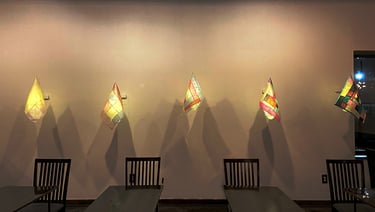

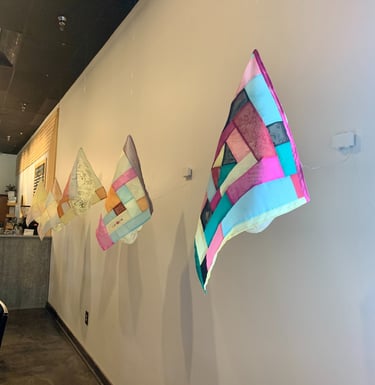

I’m currently writing this letter above the sky of the Pacific Ocean. David and I are going back to Korea to be with our Korean family celebrating Chuseok, the harvest thanksgiving holiday. This is our milestone of committing to migrating among both homes for 6 months. There were and will be questions and challenges as we go forward. How close would we be to our parents? Where are the places we can find Korean groceries? How diverse are our neighbors? What is our budget for rental homes? As we ask these questions, I continue to seek to be understood by my own family about our lifestyle. We have had and surely will continue with concerns about our finances, future children, relationships, and jobs as we live interculturally and internationally. I’m honestly nervous but also hopeful for our rich and meaningful life. I know it means my bojagi will be ever so colorful, if only I believe in its color.
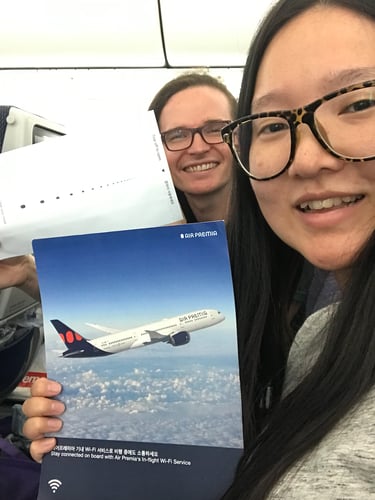

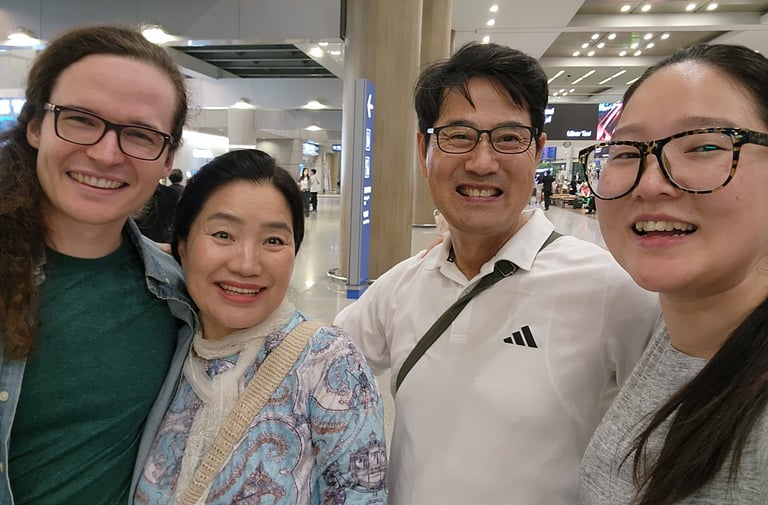



<On our way to Korea!>
<Seeing my parents' happy smile again>
<When we landed, the whole fam got together! Last time we as family got together was more than 2 years ago. Youngmin had to fly back to the US a day after, but we were all thankful that we had an evening together>
Would you lovingly pray for Songbird in these ways?
1. My health condition, hyperthyroidism, is back. Please pray for healing and grace for my body.
2. That David and I would find a affordable home in Seoul near our international & refuge communities.
3. That I will feel confident in my art-making.
4. That I would feel connected in both homes relationally, physically and emotionally.
Nesting Together #4
If you make a self-portrait, in what creature would you symbolize yourself? Does your identity represent one strong species? Or are you a hybrid creature?
Visiting neighboring nests
Other birds' answers to "what does your ancestral wedding dress look like?"
My heritage includes Scottish, German, English, Jewish or French, and possibly Cherokee Nation. I chose to draw a 1600's traditional Scottish wedding dress, using the clan Duncan's tartan. Duncan is in my family line.
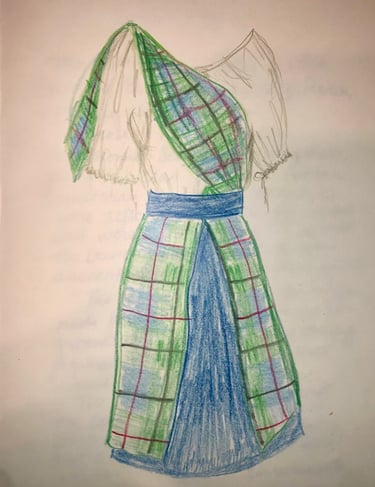

Feel free to submit your drawings if you have started!
Birdwatcher, birdlover...and birdfeeder!
If you want to support my art journey financially, I want to thank you! Your seed will be a source for me to explore the world of creation, and encourage me to make beautiful things.
Songbird Kreativ
songbirdkreativ@gmail.com